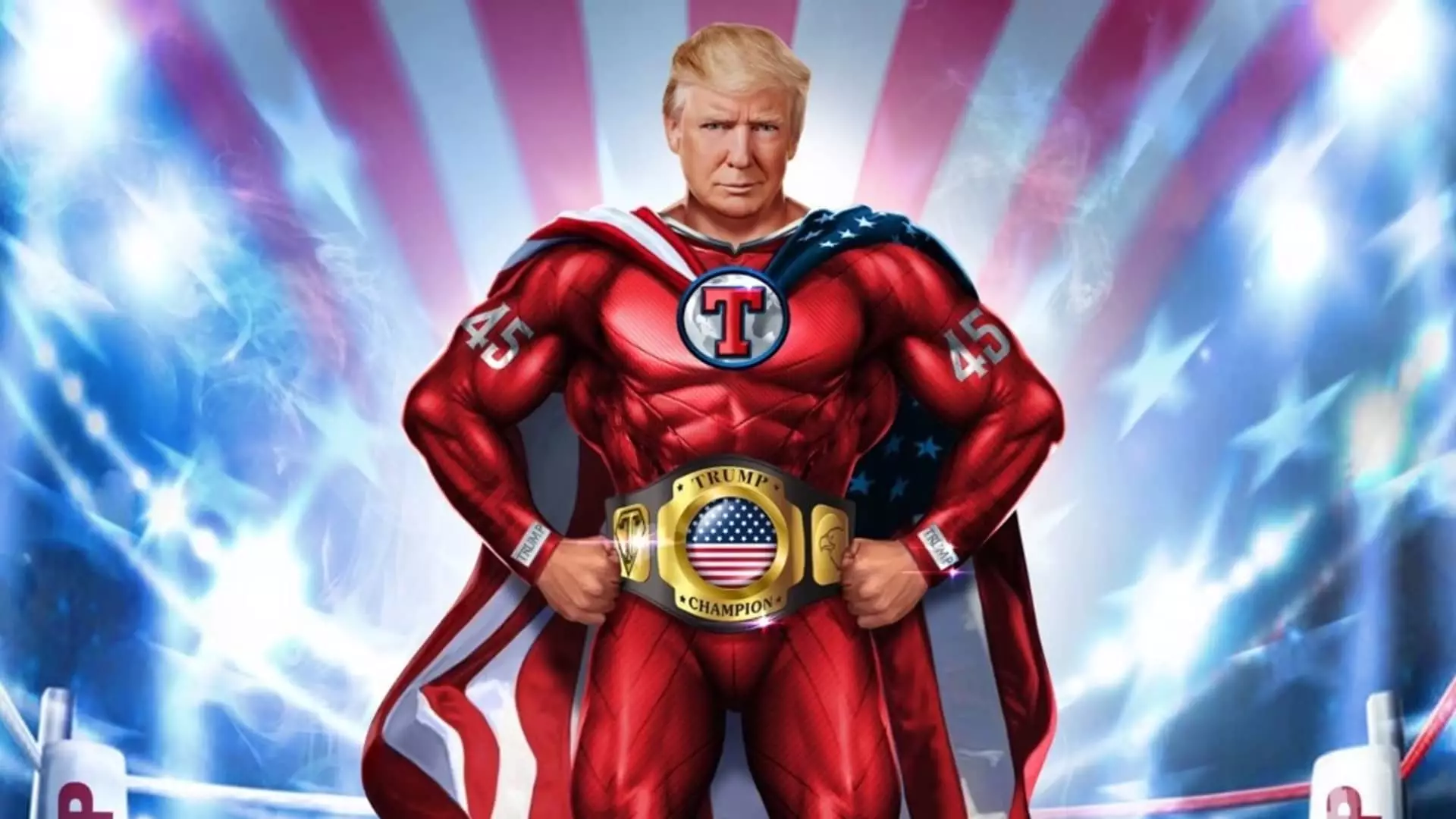Donald Trump, the controversial figure in American politics, is once again stepping into the spotlight as he introduces his latest financial venture—World Liberty Financial (WLF), a crypto project that promises to reshape the way users engage with digital currency. This announcement, with the presidential election looming just weeks away, has garnered significant attention, primarily due to Trump’s established persona in the business world and the current volatility of both his social media company and the crypto market.
World Liberty Financial aims to function as a digital financial platform akin to a “crypto bank.” The specifics regarding how it will operate remain murky, with little to no formal documentation available to the public. Existing details suggest that users of WLF will be able to borrow, lend, and invest in various cryptocurrencies. However, a comprehensive white paper outlining the project’s structure, risks, and operational mechanics has yet to be published. This lack of transparency raises questions about the viability and safety of the investment.
The ambition behind WLF entails raising an impressive $300 million at a valuation of $1.5 billion during its token sale, WLFI. While Trump promotes this venture as a way for investors to “help shape the future of finance,” potential backers are left navigating a gray area with ambiguous promises and scant details. The proposal highlights a governance aspect, where token holders will be afforded voting rights concerning decisions made within the platform, yet this notion of governance does not equate to equity or ownership in traditional business terms.
Unlike other financial products, WLFI will utilize Regulation D, which allows firms to raise capital without the traditional scrutiny of Securities and Exchange Commission (SEC) registration. This means that only accredited investors—individuals possessing a net worth exceeding $1 million or meeting other established criteria—may participate in the initial offering. While this restriction aims to safeguard investments by limiting access to financially sophisticated individuals, it restricts additional participation and may limit the project’s growth potential.
Moreover, Trump’s significant stake in his social media company, Trump Media & Technology Group, creates an intricate web of interests. He reportedly owns around 57% of the Digital Coin, identified by the ticker symbol DJT. In contrast, his influence over WLF remains less clear. The website for WLF currently serves merely as a registration landing page, implying a preliminary stage more akin to a startup than a fully-fledged enterprise.
The underlying motivations of the WLF project bring about ethical concerns, especially given that 20% of the project’s tokens are allocated to the founding team, which includes Trump and his family. Critics have raised valid points of contention regarding the affiliations of the company’s co-founders, particularly Zachary Folkman, known for earlier ventures with less-than-stellar reputations. The association with past endeavors and previous incidents, including a substantial hack that hit Dough Finance, only adds layers of skepticism surrounding the project’s intent and feasibility.
The lead-in conversation held on social media platforms indicated that approximately 12,000 listeners tuned in to learn more about WLF’s objectives. Despite these outreach efforts, many individuals in the crypto community responded with caution. Feedback on WLF’s proposal highlighted substantial concerns regarding the potential risks posed by the ties to Trump’s team, citing integrity issues tied to allegations of misconduct and questionable backgrounds of certain founders.
As WLF starts gaining traction and begins its token offering, the reception from the broader cryptocurrency community will be pivotal. Trump’s previous business experiences, fraught with controversy, could haunt this endeavor, exacerbating skepticism among potential investors. The crypto landscape already grapples with significant volatility and regulatory scrutiny, making it imperative for WLF to establish clear guidelines and transparent operational practices moving forward.
The path to success hinges on a committed approach towards audience engagement, risk management, and concrete product delivery. However, as it stands, many potential investors may view the current WLF offering as a high-risk bet in an uncertain market landscape, especially with the added complexities of Trump’s dual role as a businessman and a political figure under the public eye.
While World Liberty Financial may offer an intriguing prospect for transforming digital capital, it remains laden with ambiguity and potential pitfalls that demand further scrutiny as it seeks to carve a niche in the crowded crypto market.

